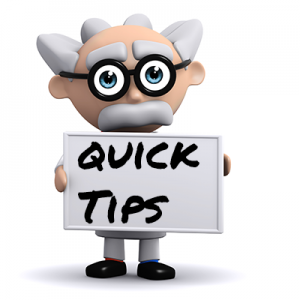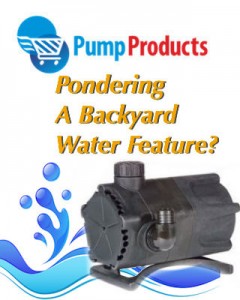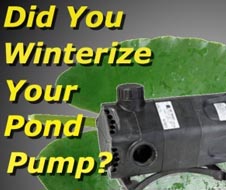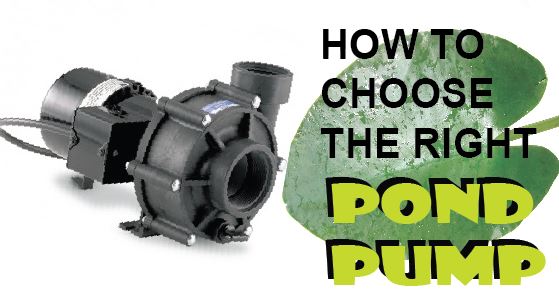-
Should I Turn My Pond Pump Off for the Winter?
September 12, 2018Nothing quite beats sitting by a backyard pond, sipping a drink, surrounded by the sounds of cascading water from a miniature waterfall and fish slapping their tails against a gentle tide. All good things must come to an end however. As time rolls on, leaves start to carpet the ground and a chill begins to permeate the air. As someone from that show about zombies and dragons would say, winter is coming. It’s that time again; time to start thinking about maintenance to your pond pump. Should I turn my pond pump off for the winter Whether you leave your pump powered on or off in the winter depends on two factors: climate and aquatic life. If you live in a climate that does not experience below freezing temperatures, you can safely leave the pump running throughout winter without any issues. However if you live in colder climates, you may want to keep the pump off during the winter. When pond water freezes, it could freeze the pump as well and cause irrevocable damage, in which case you’ll need to purchase a replacement. The freezing point for water is 32 degrees Fahrenheit. If you have no aquatic life in your pond, it is safer to have the pump off when temperatures fall below freezing so you can avoid damage to the pump. You may even want to empty your pond of water as this can prevent damage from ice buildup. Ice expands over time and may damage your pond’s lining. The primary job of a pond pump is to circulate the water of a pond. If you have aquatic life in your pond (such as fish, frogs, or turtles), the water needs to be warm enough for them. Water that is circulating takes longer to freeze than still water and pumps aid in keeping the water warm enough to sustain life. If you live in a cold climate, it’s also a good idea to have a pond heater. A pond heater can open a “breathing hole” in the ice, or a place for harmful toxins to escape. PumpProducts.com sells pond pumps from Little Giant at some of the lowest prices available on the web. Little Giant offers some of the most dependable models on the market. No matter which model of pond pump you own though, the best place to check on the specific maintenance and operating conditions of your pump is in the pump’s manual. Some pond pump models are better suited for colder climates than others. If you store your pump away for the winter, you may want to keep it submerged in a bucket of water (in a place that will not allow the water to freeze) in order to keep the seals lubricated. Pump Products application engineers are standing by to help you find the right pump, as well as to provide price quotes, stocking availability and shipping information. Call our toll free number 1-800-429-0800 to speak to an expert today.
-
Pump Products Has the Pond Pump to Create The Water Feature of Your Dreams
July 4, 2014Pond envy. Who among us hasn't cast an eye on a friend's water garden and not felt a pang of it Unlike a Maserati or a luxury suite at the Super Bowl, a backyard water feature is within easy reach. At Pump Products we have a selection of premium pond pumps -- the centerpieces of every water feature -- at prices that won't leave you tapped out. Laying out, digging, lining and building up your water feature can be a demanding process. Once you've invested all that effort, you'll want to ensure the smooth running of your water feature by selecting the right pump. (more…)
-
The Pump Products Guide to Pond Pump Winter Care
February 14, 2014Pond Pump Winter Care How's your pond pump weathering this winter Is it laying on a shelf in your garage or frozen at the bottom of your pond along with your plants and fish If you live in an area that doesn't get colder than 5C/23F, your pump may be running problem-free all winter, and that's great! But be careful not to subject the warmer water on the bottom of your pond to cooling with a pump that pulls water from the bottom. The cold currents could harm ornamental fish which pass the winter months hibernating in warmer bottom water. If you have a submersible pump, raise the pump from the bottom of the pond and set it on a shelf or crate so that it only circulates top water. This will help to prevent surface ice and protect your fish. (more…)
-
Pond Pump Buyers Guide
October 5, 2013A properly sized pump will ensure the well-being of a pond’s aquatic life, optimize its beauty and keep utility costs down. The first thing to consider when selecting a pond pump is whether it will be used primarily for a waterfall, fountain display or for filtration and recirculation. Fish pond pumps are often required to perform at a higher capacity than fountain pumps while waterfall pumps must be sized according to both pumping capacity and waterfall height. View our pond pump video Video used courtesy of Living Water Aeration Selecting the Right Pond Pump Because all pond pumps are sized in gallons per hour (GPH), knowing the volume of water in your pond is key to ensuring adequate circulation. Insufficient circulation can result in stagnant water and an environment unable to sustain fish and plants. As a general rule, pond water should be circulated about once every hour. Consequently, a pond containing 500 gallons requires a pump rated at a minimum of 500 GPH. Total pond gallons can be determined by connecting a water meter to a garden hose while initially filling the pond. To calculate the approximate volume, multiply the pond’s length in feet x width in feet x depth in feet x 7.5. In addition to circulating water, pond pumps are often required to lift water. Head height is the vertical distance the pump must raise water above the surface of the pond. The greater the head height, the harder your pump will have to work. To determine your head height, calculate the following: A = The vertical height from the top of your pump to the top of your water stream. B = Total feet of tubing connecting the top of the water stream to the water filter. C = Number of 90 degree bends and reducers. D = Number of filters and miscellaneous adapters you will be pumping water through. (Both C & D put additional pressure on the pump.) Plug your pond’s coordinates into the following formula: A + (B / 10) + (C / 2) + (D / 4) = Approximate Head Pressure For Example: A = Vertical Height = 4’ B = Total Distance = 8’ C = Number of 90 degree bends and reducers = 2 D = Number of misc. adaptors = 6 4 + (8 / 10) + (2 / 2) + (6 / 4) = 7.3 Total Dynamic Head Pressure Most pumps are sold with flow charts illustrating how they perform across a range of measures. Other factors to consider when choosing a pond pump include. Width of Spillway: In waterfall applications, 1 inch = 125 GPH. Fish Load: In fish pond applications, maximum fish load is approximately five inches of fish per five gallons of pond water. Voltage /Energy Consumption: Because pond pumps are designed to run constantly, every watt will add substantially to utility costs. POND PUMP TYPES Magnetic Drive Pumps are the most energy efficient pond pumps and, though costlier than direct drive models, they quickly pay for themselves in utility cost savings. Magnetic drive pumps are oil-free and therefore safe for ponds stocked with fish. They are not ideal for high head applications due to their limited ability to push water to significant heights. Direct Drive Pumps are better-suited for powering water features with high head height. These motor-driven pumps tend to cost less than their mag-drive counterparts but require a substantial amount of energy to operate. Unlike mag-drives, direct drive pumps are often self-priming and will draw water to them. Submersible Pumps are designed to run while quietly submerged in a pond. Their unobtrusiveness lends itself to naturalistic settings. Maintenance, however, can be inconvenient as submersible pumps must be periodically pulled from the water and cleared of debris. External Pumps require less maintenance than submersible pumps and tend to have a longer life. They are often loud and have to be camouflaged but require less energy than submersible pumps, particularly in larger applications. A 6000 GPH external pump can run on 450 watts, where as a standard submersible pump generally requires 750 – 1200 watts. TIPS When shopping for a pond pump for a stream or waterfall, bigger is better. Make sure its head capacity, or lift, is well above the height you've planned for your falls. Check the pump cord length. Some codes require the electrical outlet for a water feature to be at least 6 feet away from water. Consider purchasing two pumps at once. An extra pump could save your pond if your existing pump should fail. For detailed specs, manuals and reviews of the pond pumps we stock and ship nationally, visit our product pages at www.pumpproducts.com or call us for details: 1-800-429-0800.









